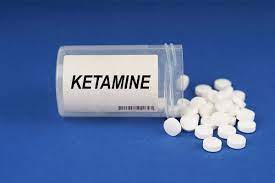
Ketamine, originally developed as a fast-acting anesthetic, KETAMINE FOR SALE has garnered attention beyond its medical uses. In recent years, it has gained popularity for its potential therapeutic applications, particularly in the realm of mental health. Although it has been associated with recreational abuse, ketamine’s role as a medical and psychiatric treatment is increasingly recognized. This article delves into the history, uses, benefits, risks, and emerging research surrounding ketamine.
What is Ketamine?
Ketamine is a dissociative anesthetic that was first synthesized in 1962 by Dr. Calvin Stevens at Parke-Davis pharmaceutical company. Initially used as an anesthetic for humans and animals during surgery, it gained approval in the 1970s. Ketamine works primarily by blocking the NMDA (N-Methyl-D-Aspartate) receptor in the brain, which is involved in pain sensation and mood regulation. By inhibiting these receptors, ketamine produces profound effects such as anesthesia, sedation, and analgesia.
Medical Uses of Ketamine
- Anesthesia: Ketamine remains a staple in anesthesiology, especially in settings where maintaining airway control is critical. Unlike other anesthetics, ketamine preserves respiratory function, which makes it a preferred option in emergency medicine and on the battlefield.
- Pain Management: Ketamine is also used for managing acute and chronic pain, particularly in cases where traditional opioids are ineffective or contraindicated. It is effective in treating severe pain associated with conditions like complex regional pain syndrome (CRPS), neuropathic pain, and post-operative pain.
- Emergency Medicine: Ketamine’s fast-acting and potent properties make it invaluable in emergency situations, including as a sedative for intubated patients or in the treatment of conditions like status epilepticus or severe asthma attacks.
- Mental Health Treatment: Over the past two decades, there has been a growing body of research supporting ketamine’s potential to treat psychiatric disorders, particularly depression. Its ability to provide rapid relief from depressive symptoms, even in treatment-resistant patients, has opened new avenues for its use in psychiatric care.
Ketamine in Psychiatry
Ketamine’s use in psychiatry began to gain traction after a series of clinical studies in the early 2000s demonstrated its effectiveness in alleviating symptoms of depression, particularly in individuals who had not responded to conventional antidepressants.
- Treatment-Resistant Depression: Ketamine has shown remarkable promise in rapidly reducing depressive symptoms, sometimes within hours of administration. This makes it particularly valuable for individuals suffering from treatment-resistant depression, a condition where traditional antidepressant medications fail to provide relief. Ketamine’s impact on the brain’s glutamate system is believed to be the mechanism behind its rapid antidepressant effects, which differs from the serotonin-based action of most conventional antidepressants.
- Suicidal Ideation: One of the most profound aspects of ketamine’s psychiatric benefits is its ability to reduce suicidal thoughts almost immediately. In cases where patients are in acute suicidal crises, ketamine can provide critical relief, offering hope for individuals who may otherwise have limited treatment options.
- Post-Traumatic Stress Disorder (PTSD): Early studies suggest that ketamine may be beneficial in treating PTSD, a disorder often resistant to conventional therapies. By modifying brain plasticity and promoting new neural connections, ketamine could help patients break free from the cycles of trauma-induced thoughts and emotions.
- Anxiety and Bipolar Disorder: Research is still ongoing, but ketamine has shown some potential in the treatment of anxiety disorders and bipolar depression, offering rapid symptom relief in situations where traditional treatments may take weeks or months to show effect.
Forms of Administration
Ketamine is available in several forms, each with varying routes of administration:
- Intravenous (IV) Infusion: In clinical settings, ketamine is often administered via IV infusion, allowing precise control over dosage and ensuring quick onset of effects.
- Intramuscular (IM) Injection: This method is typically used in emergency situations or for patients unable to tolerate an IV.
- Nasal Spray (Esketamine): In 2019, the FDA approved esketamine, a derivative of ketamine, in nasal spray form for the treatment of treatment-resistant depression. This form offers the benefit of being administered in a doctor’s office without the need for IV access.
- Oral Ketamine: Although less common, oral ketamine is sometimes used for its sedative or analgesic properties, although the bioavailability is lower compared to IV or IM administration.
Risks and Side Effects
Despite its many benefits, ketamine is not without its risks. When used in medical settings under professional supervision, ketamine is generally safe, but misuse and overuse can lead to serious side effects.
- Cognitive and Psychological Effects: Ketamine can produce dissociative and hallucinogenic effects. While this is often the intended result in anesthesia, when used outside of a controlled environment, these effects can be distressing. Long-term use has been associated with memory problems, cognitive dysfunction, and “ketamine bladder syndrome,” a condition that causes inflammation and damage to the urinary tract.
- Abuse Potential: Ketamine is classified as a Schedule III controlled substance in many countries, due to its potential for abuse. Recreational use of ketamine, often referred to as “Special K,” can lead to dangerous physical and psychological effects, including addiction, overdose, and long-term psychological impairment.
- Cardiovascular Effects: Ketamine can increase blood pressure and heart rate, which may be dangerous for individuals with cardiovascular conditions. It also has the potential to cause arrhythmias or other heart-related complications when abused.
- Psychiatric Side Effects: In certain individuals, especially those with a history of psychotic disorders, ketamine may precipitate or exacerbate symptoms like delusions, paranoia, and dissociation.
The Future of Ketamine in Medicine
Research on ketamine is ongoing, with an increasing number of studies exploring its potential in various therapeutic contexts. As a result, its role in mental health care is becoming more significant, especially in treating disorders that are often resistant to conventional treatments.
In the future, ketamine may evolve into a cornerstone of rapid-acting treatments for depression and anxiety. Furthermore, the development of new, less potent analogs or formulations of ketamine may minimize its side effects while enhancing its therapeutic benefits.
Conclusion
Ketamine is a versatile drug with a complex history. It has proven its value in anesthesiology, pain management, and emergency medicine. However, its most promising application in recent years has been in psychiatry, offering hope for individuals suffering from treatment-resistant depression, PTSD, and other mental health conditions. While its abuse potential and side effects are significant, when used responsibly and under professional supervision, ketamine has the potential to revolutionize mental health treatment. Ongoing research will likely continue to unveil new applications, further solidifying its place in modern medicine.
